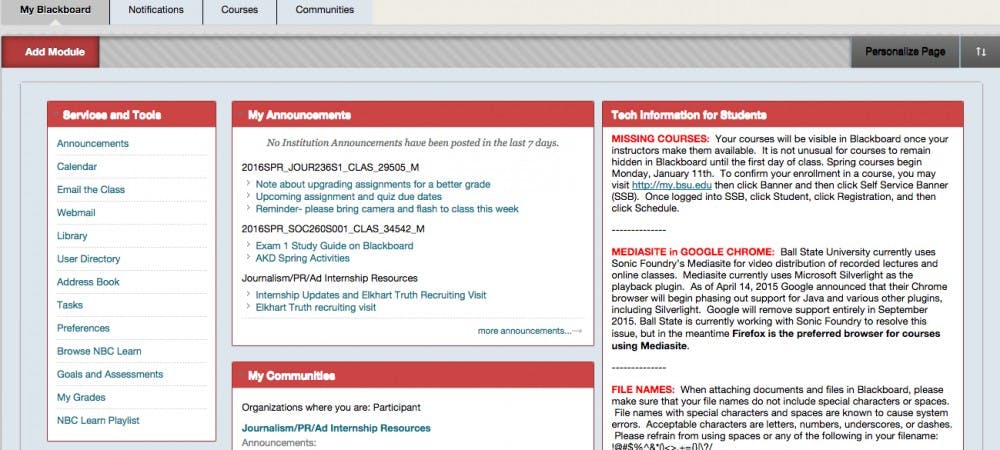For accreditation in 2014, assignments corresponding to five of the University's colleges were used. These were the College of Applied Science and Technology, the College of Communication Information and Media, the College of Fine Arts, the College of Science and Humanities and the Miller College of Business.
For the written communication section, 200 assignments were randomly chosen from the 792 earmarked for the accreditation. For the critical thinking outcome section, 200 assignments were sampled from the 677 that aligned with the section.
Ball State uses homework submitted on Blackboard for accreditation purposes, but students are not notified if their assignments are used.
Ball State’s University Core Curriculum is evaluated through student work. Assignments are pulled from Blackboard and used to maintain Ball State’s accreditation with the Higher Learning Commission, said William Knight, assistant provost for institutional effectiveness.
Students are not notified when their assignment is used as a sample, but Knight said this is normal. Their names are not kept on the work, and if there is a name present, nothing is done with it.
“Most campuses ... use this approach, and it’s kind of unknown to the students,” Knight said. “The purpose is ... [to give] feedback to the university about how well students are doing. So if you find out that some aspects of writing aren’t as good as you’d like, well what does that mean we have to do?”
Materials from Tier 2 and Tier 3 courses are assessed as part of the accreditation. Tier 2 courses are assessed on judgment skills, while Tier 3 courses are assessed on written communication and critical thinking skills.
Professors who teach these courses select one assignment, such as a paper or presentation, that represents a specific skill.
At the beginning of the summer, Knight goes to Blackboard and pulls all of those examples of student work. Because there are thousands of examples, faculty members only rate a couple hundred.
“Rather than giving lots and lots of students a standardized exam, we’re collecting work they’ve already turned in and repurposing it,” Knight said. “We’re recycling it for the purpose of assessment.”
Work is rated to be not proficient, proficient or highly proficient in subcategories of each skill. For example, Tier 3 courses are examined for skills such as context, purpose, development and support. Data is then entered into a spreadsheet, showing which percentage of students are in each category of proficiency.
Sarah Garner, a junior general studies major, said she thinks the involvement with Blackboard is “kind of weird,” but she understands the concept behind it.
“I would rather [the university] pull work [from Blackboard] than have to take a standardized test,” Garner said. “It makes sense. They have to figure out a way to see if students are actually learning.”
Even professors don’t receive the rating their classes received after the results have been determined. It’s one university rating, Knight said.
“This isn’t about Professor X’s class is doing really good and Professor Y’s class [isn’t],” Knight said. “Otherwise, the faculty thinks this is about their teaching, and it’s not. It’s about the students’ learning.”
Knight stressed the importance of noting the accreditation is not meant to target individual students or professors. It is about investing in future students.
“The purpose of this is feedback to improve the learning of future students,” Knight said. “It is not about … students themselves.”





